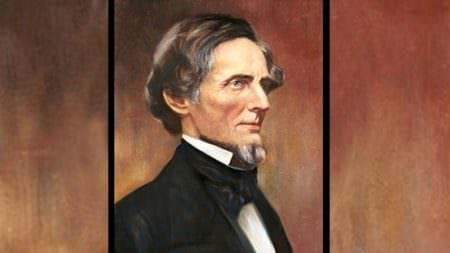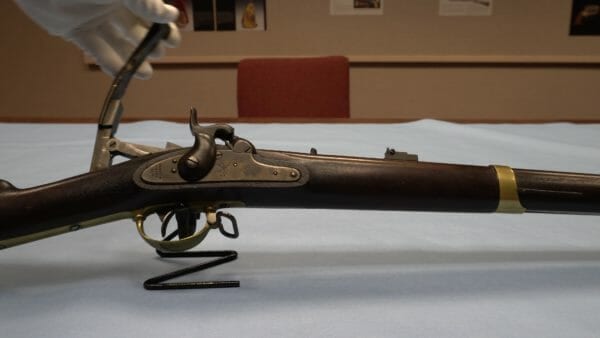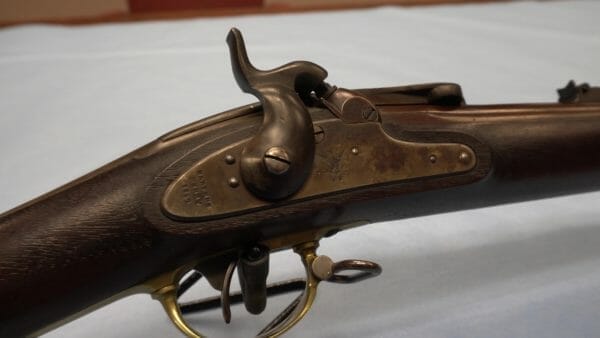U.S.A. –-(AmmoLand.com)- In 1858, Congress passed the Army Appropriation Act in an attempt to “get with the times” in terms of arms advancements. They had only recently implemented the conversion of flintlock arms to percussion earlier in the decade, and European countries had begun to pass us by and move into the breechloading era.
One of the ways to move forward under the 1858 act was to have traditional muzzleloaders converted to breechloaders. There were a variety of different methods out there, and no one single type of conversion was decided upon as the standard to be used.
James H. Merrill of Baltimore was one of the contractors selected under this 1858 act. He was tasked with converting 100 Model 1841 muzzleloading rifles to breechloading arms that used his system. The Model 1841 was often known as the Mississippi Rifle after the regiment that prominently carried them, commanded by future Confederate President Jefferson Davis who was – surprise – from Mississippi.

The guns Merrill received were all from Harpers Ferry and had to be reamed out and sleeved from .54 caliber to .58 caliber. Most of the guns had already been altered at the arsenal one or more times before Merrill got them, and some of the modifications included replacement of the original front sight as well as alterations near the muzzle for bayonet attachment hardware, such as a mounting lug.
In order to perform the conversion, the breech portion of the barrel that included the tang and breech plug, near where the percussion cone was located, was removed and replaced with the Merrill breech mechanism that measured approximately 6″ in length. To open, two tabs on the front of the new breech section were pulled back to unlock it, and then it could be swung up to provide access. The paper cartridge containing powder and ball was loaded and the breech was closed and locked back into place.
To help protect the shooter from any accidental blowback, the breech locked into place at a 90-degree angle, the two tabs helped keep it locked, and the breech could not be opened completely once the hammer had come to half or full cock. It wasn’t foolproof, but it was certainly better than nothing.

Even though Merrill’s design was a breechloader, it was still a percussion system.
Once the paper cartridge was loaded, the hammer could come to half cock and a percussion cap could be seated. Then, the gun could come to full cock and be fired. It was definitely an improvement over traditional muzzleloaders, but there was still much room for improvement. It wouldn’t be until the advent of the self-contained metallic cartridge that the true potential of a breechloading gun would be fully realized.
Of the 100 guns Merrill converted, only 86 were delivered; 14 of them were irreparably damaged during conversion. Obviously, fewer than that are left today, making them really neat pieces of arms development history. It was mentioned earlier that many of the guns had replaced front sights and bayonet lugs added to them, but this example still has its original front sight and no bayonet modifications.

This rare Merrill conversion of the Model 1841 Mississippi rifle is part of the May 2021 Arms & Armor sale from Lewis & Grant Auctions. It has a presale estimate of $6,000-$9,000.
About Logan Metesh
Logan Metesh is a historian with a focus on firearms history and development. He runs High Caliber History LLC and has more than a decade of experience working for the Smithsonian Institution, the National Park Service, and the NRA Museums. His ability to present history and research in an engaging manner has made him a sought after consultant, writer, and museum professional. The ease with which he can recall obscure historical facts and figures makes him very good at Jeopardy!, but exceptionally bad at geometry.

